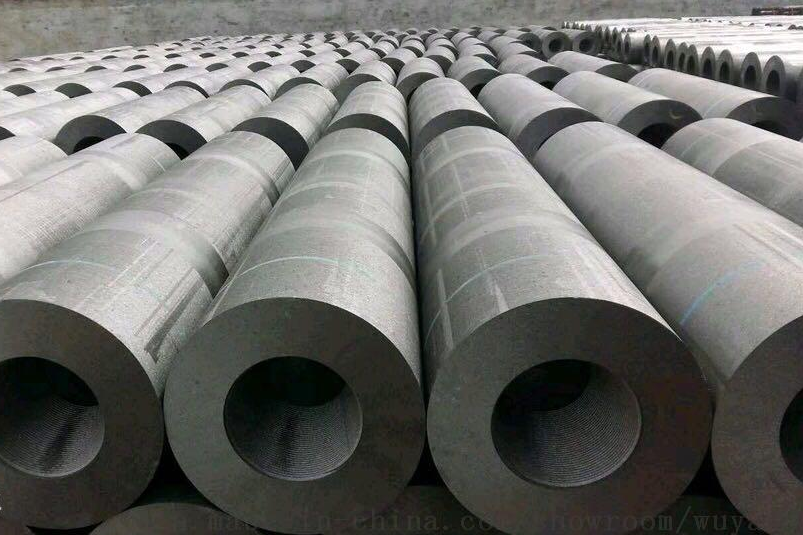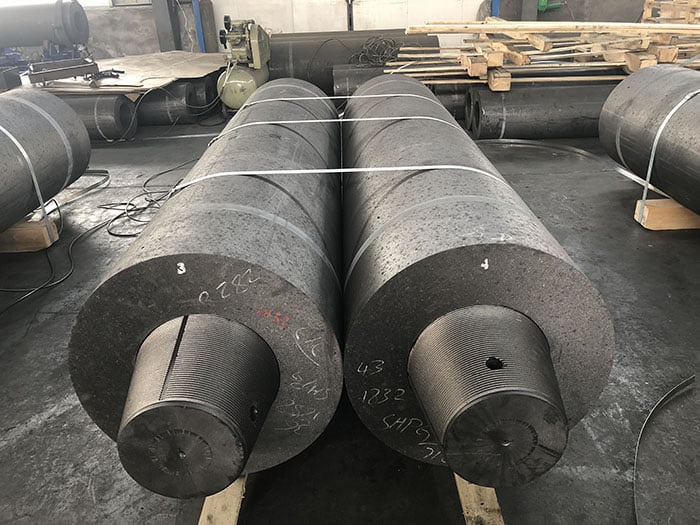Graphite is a common non-metallic material, black, with high and low temperature resistance, good electrical and thermal conductivity, good lubricity and stable chemical characteristics; good electrical conductivity, can be used as an electrode in EDM. Compared with traditional copper electrodes, graphite has many advantages such as high temperature resistance, low discharge consumption, and small thermal deformation. It shows better adaptability in the processing of precision and complex parts and large-size electrodes. It has gradually replaced copper electrodes as electric sparks. The mainstream of machining electrodes [1]. In addition, graphite wear-resistant materials can be used under high-speed, high-temperature, and high-pressure conditions without lubricating oil. Many equipment widely use graphite material piston cups, seals and bearings 
At present, graphite materials are widely used in the fields of machinery, metallurgy, chemical industry, national defense and other fields. There are many types of graphite parts, complicated parts structure, high dimensional accuracy and surface quality requirements. Domestic research on graphite machining is not deep enough. Domestic graphite processing machine tools are also relatively few. Foreign graphite processing mainly uses graphite processing centers for high-speed processing, which has now become the main development direction of graphite machining.
This article mainly analyzes graphite machining technology and processing machine tools from the following aspects.
①Analysis of graphite machining performance;
② Commonly used graphite processing technology measures;
③ Commonly used tools and cutting parameters in processing graphite;
Graphite cutting performance analysis
Graphite is a brittle material with a heterogeneous structure. Graphite cutting is achieved by generating discontinuous chip particles or powder through the brittle fracture of the graphite material. Regarding the cutting mechanism of graphite materials, scholars at home and abroad have done a lot of research. Foreign scholars believe that the graphite chip formation process is roughly when the cutting edge of the tool is in contact with the workpiece, and the tip of the tool is crushed, forming small chips and small pits, and A crack is produced, which will extend to the front and bottom of the tool tip, forming a fracture pit, and a part of the workpiece will be broken due to the tool advancement, forming chips. Domestic scholars believe that the graphite particles are extremely fine, and the cutting edge of the tool has a large tip arc, so the role of the cutting edge is similar to extrusion. The graphite material in the contact area of the tool – the workpiece is squeezed by the rake face and the tip of the tool. Under pressure, brittle fracture is produced, thereby forming chipping chips [3].
In the process of graphite cutting, due to changes in the cutting direction of the rounded corners or corners of the workpiece, changes in the acceleration of the machine tool, changes in the direction and angle of cutting in and out of the tool, cutting vibration, etc., a certain impact is caused to the graphite workpiece, resulting in the edge of the graphite part. Corner brittleness and chipping, severe tool wear and other problems. Especially when processing corners and thin and narrow-ribbed graphite parts, it is more likely to cause corners and chipping of the workpiece, which has also become a difficulty in graphite machining.
Graphite cutting process
The traditional machining methods of graphite materials include turning, milling, grinding, sawing, etc., but they can only realize the processing of graphite parts with simple shapes and low precision. With the rapid development and application of graphite high-speed machining centers, cutting tools, and related supporting technologies, these traditional machining methods have gradually been replaced by high-speed machining technologies. Practice has shown that: due to the hard and brittle characteristics of graphite, tool wear is more serious during processing, therefore, it is recommended to use carbide or diamond coated tools.
Cutting process measures
Due to the particularity of graphite, in order to achieve high-quality processing of graphite parts, corresponding process measures must be taken to ensure. When roughing graphite material, the tool can directly feed on the workpiece, using relatively large cutting parameters; in order to avoid chipping during finishing, tools with good wear resistance are often used to reduce the cutting amount of the tool, and Ensure that the pitch of the cutting tool is less than 1/2 of the diameter of the tool, and perform process measures such as deceleration processing when processing both ends [4].
It is also necessary to reasonably arrange the cutting path during cutting. When processing the inner contour, the surrounding contour should be used as much as possible to cut the force part of the cut part to always be thicker and stronger, and to prevent the workpiece from breaking [5]. When processing planes or grooves, choose diagonal or spiral feed as much as possible; avoid islands on the working surface of the part, and avoid cutting off the workpiece on the working surface.
In addition, the cutting method is also an important factor that affects graphite cutting. The cutting vibration during down milling is less than that of up milling. The cutting thickness of the tool during down milling is reduced from the maximum to zero, and there will be no bouncing phenomenon after the tool cuts into the workpiece. Therefore, down milling is generally selected for graphite processing.
When processing graphite workpieces with complex structures, in addition to optimizing the processing technology based on the above considerations, some special measures must be taken according to the specific conditions to achieve the best cutting results.
Post time: Feb-20-2021


